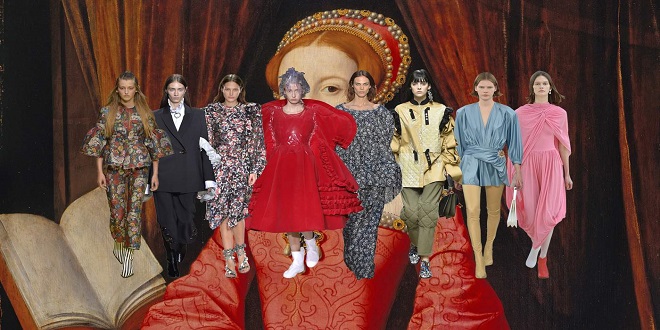
A most difficult and unsatisfying art, because as soon as a dress is born it has already become a thing of the past. Elsa Schiaparelli Arguably, all fashion is not art, but on occasion, it can become an art. While these words might not describe the work of Coco Chanel, they can aptly be applied to a number of other practitioners—including Sonia Delaunay, Liubov Popova, Varvara Stepanova, Elsa Schiaparelli, Cristóbal Balenciaga, Viktor & Rolf, Martin Margiela, and Hussein Chalayan—who approached fashion design from an artist’s perspective.
This chapter will reinforce the links that tie fashion and art practice together. Many artists have turned to fashion as a ‘living’ art form and have applied artistic methodologies to the fabric rather than canvas or clay. Fashion as art is a theme that has been embraced by numerous curators and museum directors alike and addressed in major fashion exhibitions over the past twenty years.
Modernist abstract design
Design historians and critics tend to discuss the 1920s, in modernist terms, as a decade in which the successful integration of the fine arts, architecture, graphic design, and the applied arts was achieved. A symbiotic relationship between the fine arts, and the applied and decorative arts, emerged and led to a more conceptually enhanced aesthetic direction in fashion.
Fine artists such as Sonia Delaunay in Paris, and Liubov Popova and Varvara Stepanova in Moscow, successfully applied the dynamics of this modern visual language to a utilitarian art form: clothing. By applying their aesthetic concerns to both fashion and textile design, they pioneered the practical application of abstraction to everyday objects, and thus consolidated the link between the art and design movements of the post-war era.
In fact, Anscombe (1984) argues that it was the familiarity of abstract designs on textiles that led to the acceptance of the avant-garde ‘abstract’ art seen in the museums. She observes the significant fact that: ‘The character of the early Bauhaus textiles . . . mark[s] a departure from the textile patterns produced before the war in its abandonment of conventional patterning FRAMING FASHION: THE ARTISTS WHO MADE CLOTHES.
Delaunay: cubism
Unlike Chanel, as Delaunay viewed fashion design as an alternate mode of artistic expression, her interest in fashion as a commercial enterprise is overshadowed by her conceptual interests and her more general desire to bring material to life. When questioned about her fashion design in an interview for the New York Times, Sonia remarked: ‘I wasn’t interested in fashion, but in applying color and light to fabrics.’
Based on her color theories of ‘Simultaneous Contrasts’, her first Simultaneous Dress of 1913 was ‘a creation in sheer fabric, flannel, silk and lace in a riot of colors that ranged from English rose to blue, scarlet to tangerine yellow’ (Madsen, 1989: 122). Immediately, with the interplay of colors and abstract form, the leap from Cubist collage to fashion was complete.
Delaunay’s famous comment to Tristan Tzara, the Dadaist poet, that: ‘If a painting has become part of our lives, it is because women have been wearing it!’ underlines this transformation (cited in Anscombe. Her friendship with Tzara and her ideological ties with the Dadaist painters and poets were demonstrated in her series of robes-poèmes (dress poems) in 1922.
The robespoèmes consist of a series of abstract dress designs in which geometric blocks of color are interspersed with lines of Tzara’s Dada poetry. As the body moves, the interrelationship of color and text becomes very fluid and creates a variety of different simultaneous juxtapositions.
Last word
One robe-poème called The Eternally Feminine caressingly played with the wearer’s body, with the ‘l’ appearing at the bend of an arm, and the ‘e’ at the fingers. Ideologically, her comprehension of the ephemeral nature of fashion, as opposed to the enduring values of institutionalized art, would have appealed to the Dadaists.




